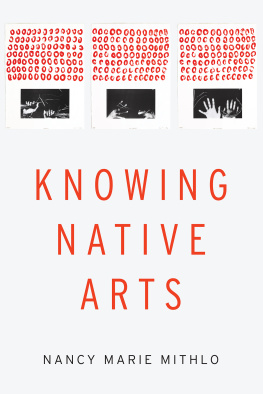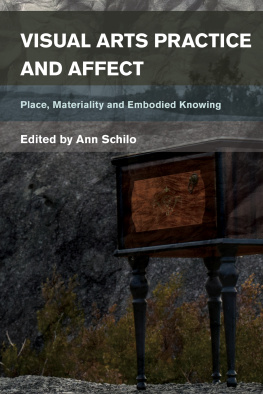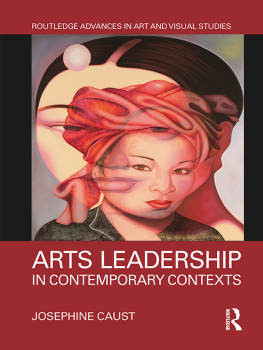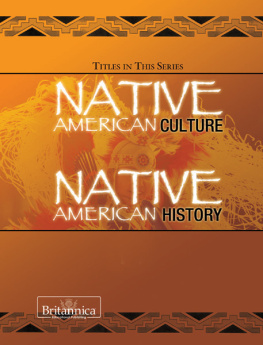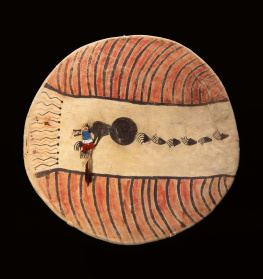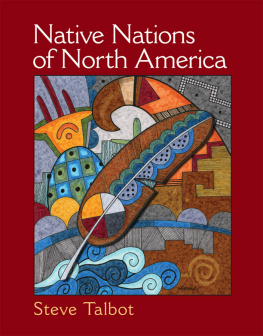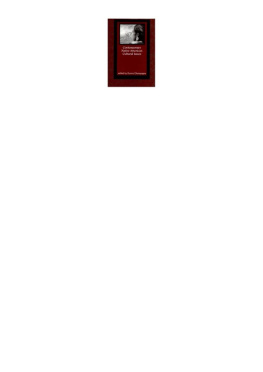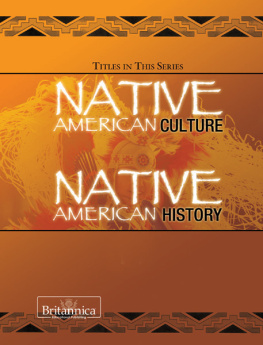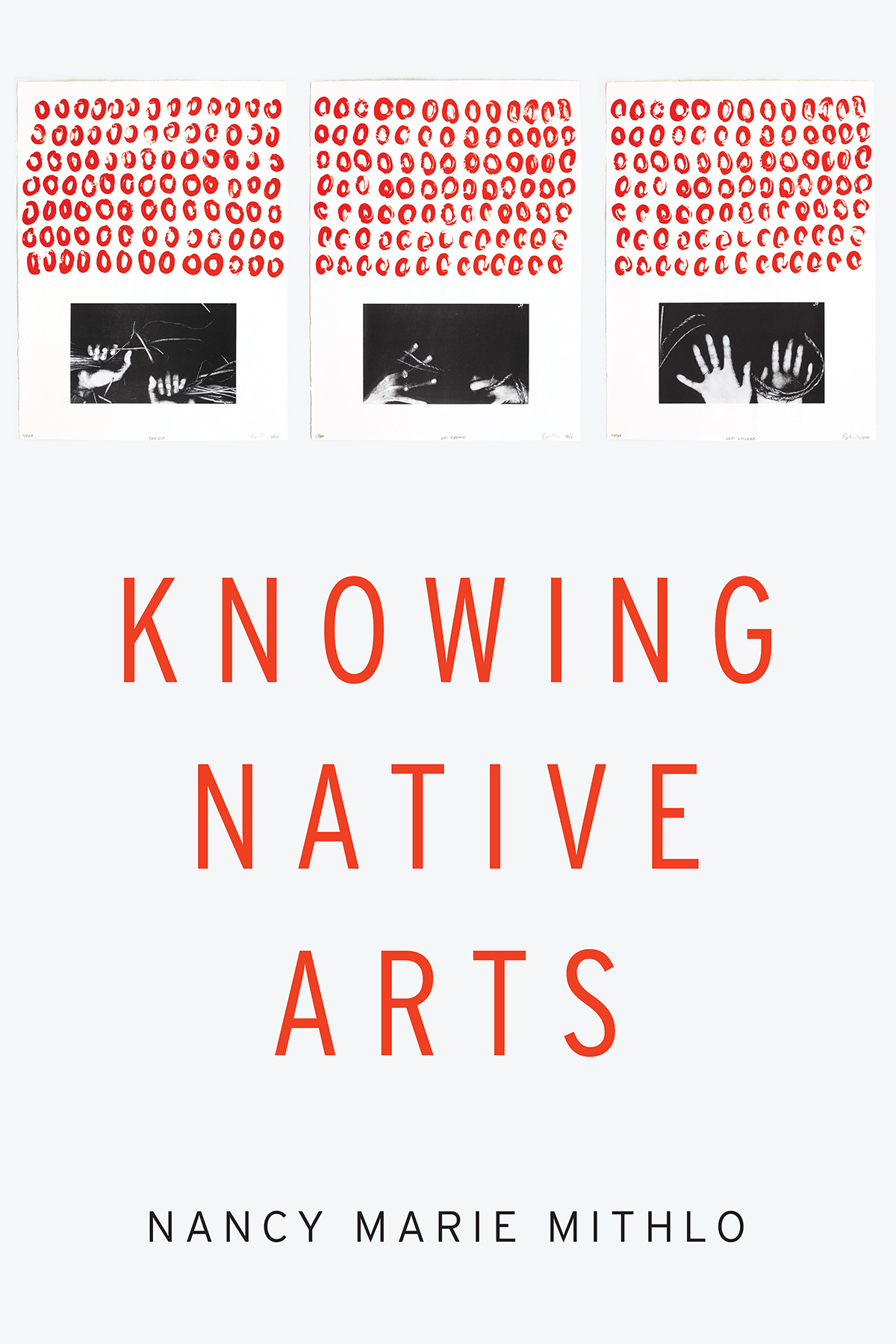
This is a deeply personal book that blends Mithlos personal, family, and tribal experiences with significant scholarship and meditation on the field of Native American art.
Ryan Wheeler, coeditor of Glory, Trouble, and Renaissance at the Robert S. Peabody Museum of Archaeology
Mithlo provides a rare opportunity to expose the truth and lay bare the great challenges and divides in contemporary Native arts. Her essays uncover, articulate, and open the discussion to illuminate the disenfranchisement of Native arts today.
Patsy Phillips (Cherokee), director of the Institute of American Indian Arts Museum of Contemporary Native Arts
Knowing Native Arts
Nancy Marie Mithlo
University of Nebraska Press | Lincoln
2020 by the Board of Regents of the University of Nebraska
Cover designed by University of Nebraska Press; cover artwork Sara Siestreem, Thanks Giving / Giving Thanks, 2016: PRAYER , lithograph, 22" 30"; UNARMED , lithograph, 22" 30"; NON-VIOLENT , lithograph, 22" 30". Printed at Matrix Press, Missoula MT .
Cover: Artist statement by Sara Siestreem (Hanis Coos): This work is my thanksgiving celebration, a feast I share with all of you. I am expressing gratitude to the land and our fundamental relationship to it, thanks to those who conspired all through time to put us here today, and thanks to those on the front lines, pushing back for all of us.
All rights reserved.
Publication of this volume was assisted by UCLA American Indian Studies Center, Division of Social Sciences, Department of Gender Studies, Institute of American Cultures, and the Office of Equity, Diversity and Inclusion.
Library of Congress Cataloging-in-Publication Data
Names: Mithlo, Nancy Marie, author.
Title: Knowing native arts / Nancy Marie Mithlo.
Description: Lincoln: University of Nebraska Press, [2020] | Includes bibliographical references.
Identifiers: LCCN 2019041011
ISBN 9781496202123 (hardback)
ISBN 9781496221926 (epub)
ISBN 9781496221933 (mobi)
ISBN 9781496221940 (pdf)
Subjects: LCSH : Indian artsStudy and teaching. | Education, HigherAims and objectives. | Museums and Indians. | Cultural awareness.
Classification: LCC E 98. A 73 M 57 2020 | DDC 306dc23
LC record available at https://lccn.loc.gov/2019041011
The publisher does not have any control over and does not assume any responsibility for author or third-party websites or their content.
Dedicated to Michael Lee Baby Mike Mithlo Jr. (October 11, 1988August 8, 2016)
Contents
This work spans a thirty-five-year period of my work in Native arts communitiesfrom my entry into the field in 1985 as a museum studies student at the Institute of American Indian Arts in Santa Fe, New Mexico, to my present post as a professor of gender studies and American Indian studies at the University of California, Los Angeles. I have been blessed with countless family, friends, teachers, mentors, and accomplices over these years who have variously encouraged, cajoled, and shamed me into serving the emerging field of American Indian arts as an academic and a curator. Their generosity of spirit is present in every class I teach, in every student I mentor, in every project I pursue. My special gratitude to Mr. Charles Dailey, the founder of the Institute of American Indian Arts Museum Training Program, for lighting the way.
For this manuscript in particular, my thanks to the expert editing assistance of Rupert Jenkins and the faithful staff of the University of Nebraska Press, in addition to my amazing faculty and staff colleagues at UCLA . I was fortunate to receive funding from the American Indian Studies Center, Institute of American Cultures, at UCLA and the George A. and Eliza Gardner Howard Foundation at Brown University, Providence, Rhode Island, for my 201718 sabbatical. I am grateful to the many artists who shared their work with me and to the staff at several library and archival holdings who assisted me in my research.
Readers will find tales of pain, loss, and love in between these pages of academic discussions. Were it not for these many mistakes, trials, traumas, and joys, I would not have the voice that I exercise here. Women and girlslets do more of this.
Dangerous for the Heart
It is the start of another fall semester, and I am mentally preparing for my incoming college studentsour millennialswith all their brash confidence and deep insecurities, a potent mix of hope and despair. This seasonal passage offers a rare moment of introspection before the labor of higher education takes its toll, leaving me too exhausted to think philosophically after a few weeks in the classroom. The year 2017 marks my thirtieth year of teaching American Indian art, and I find myself, as any professional might, wondering if my work has resulted in anything substantively meaningful.
For those of us in the business of education, the fall is uniquewe all have the opportunity to remake ourselves. Familiar students may return unrecognizable, sporting serious I am an academic glasses and cropped hair or transforming themselves into buff athletes with a deep tan. These transformations are useful for educators like me, for they remind me of the possibility for change. Perhaps only two or three of these promising young people, after sixteen weeks of my lectures, will emerge with an altered understanding of Native American life. Cumulatively over the course of a career, thats 12 students a year (out of perhaps 150 students enrolled in my classes annually) multiplied by 30 years for a total of 360 individuals on my watch (never mind those remaining 4,000+ students who were sleeping or daydreaming or who did not care) who may have gained a heightened awareness that, yes, Native people are alive and live among us (including me, their instructor) and that our Indigenous communities worldwide are vibrant and diverse and have much wisdom to offer. Are those results360 mindsgood enough for me? Do they justify the immense time, sacrifice, and survival of my ancestors?
William Mendoza, the former executive director of the White House Initiative on American Indian and Alaska Native Education, estimates that of every one hundred Native American high school students, only sixty graduate. Of these 60 students we estimate that 21 will attend some form of post-secondary education and of those 21 only two will graduate from a four-year college. It takes us (American Indians) 2,500 ninth graders to produce one Masters Degree and 12,000 students to produce one doctorate. Compounding the low numbers of Native educators, there are few resources available to teach Indian art compared with other fields. Textbooks, image banks, fellowships, and journals authored by and with a Native perspective are starkly absent, leaving instruction at the whim of Native American Heritage Month approaches that only add color rather than truly inform students.
The sobering statistics regarding the lack of quality education for Native Americans are well documented.
So it is with some trepidation that I enter a classroom, knowing that my legitimacy is questioned both by my peers and by the students I am to guide and mentor. I think a lot about my toolbox of strategies to garner trust, to entertain, to cajole, and ultimately to influence. My greatest advantage ultimately is the capacity of the human heart. I trust in the human nature to feel, to hurt. And yes, I am not beyond employing hurt to make a point, to leave an impression. I am confident in this approach of making people feel because I know and experience the capacity of my own heart. This strategy has served me well, until now.
Next page
